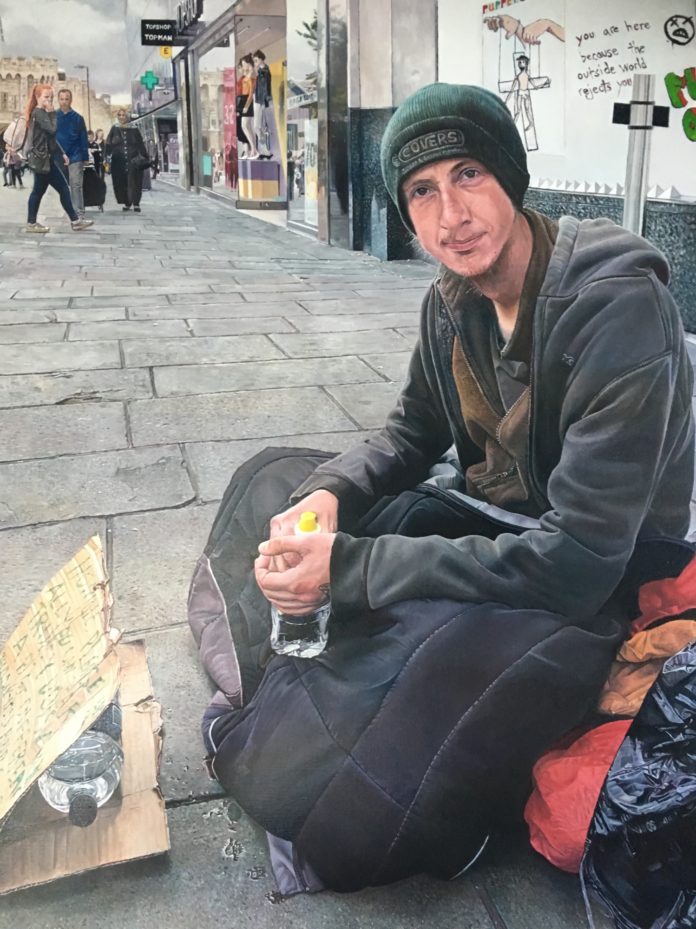On painting portraits > Contemporary realist James Earley shares why he chooses this particular subject, how he ultimately produces a painting, and the message he wants to get across in his art.
Why Paint the Homeless?
BY JAMES EARLEY
There are things in life that people do, and they do not know why they do them; they cannot apply logic, instead they let their heart speak. And instead of doing what most people do and ignore it and choose to apply “logic and reasoning,” they push on; they let their heart speak; they allow doors to open into rooms that are unfamiliar and at first frightening, and see the world in its purest form.
I cannot tell you what logic pushed me into painting the homeless. I have been asked by galleries to paint other subjects — “anything but the homeless.” I have been told that nobody wants a painting of a homeless person on their walls.
I have been advised that I could make a lot more money through my art by painting other subjects. Yet I am always led to painting the homeless. My heart tells me this is what I should be doing and I feel at ease and comfortable doing it. My mind is often like a storm at sea, waves crashing, constant noise and movement, yet the only time the sea calms is when I paint the homeless.
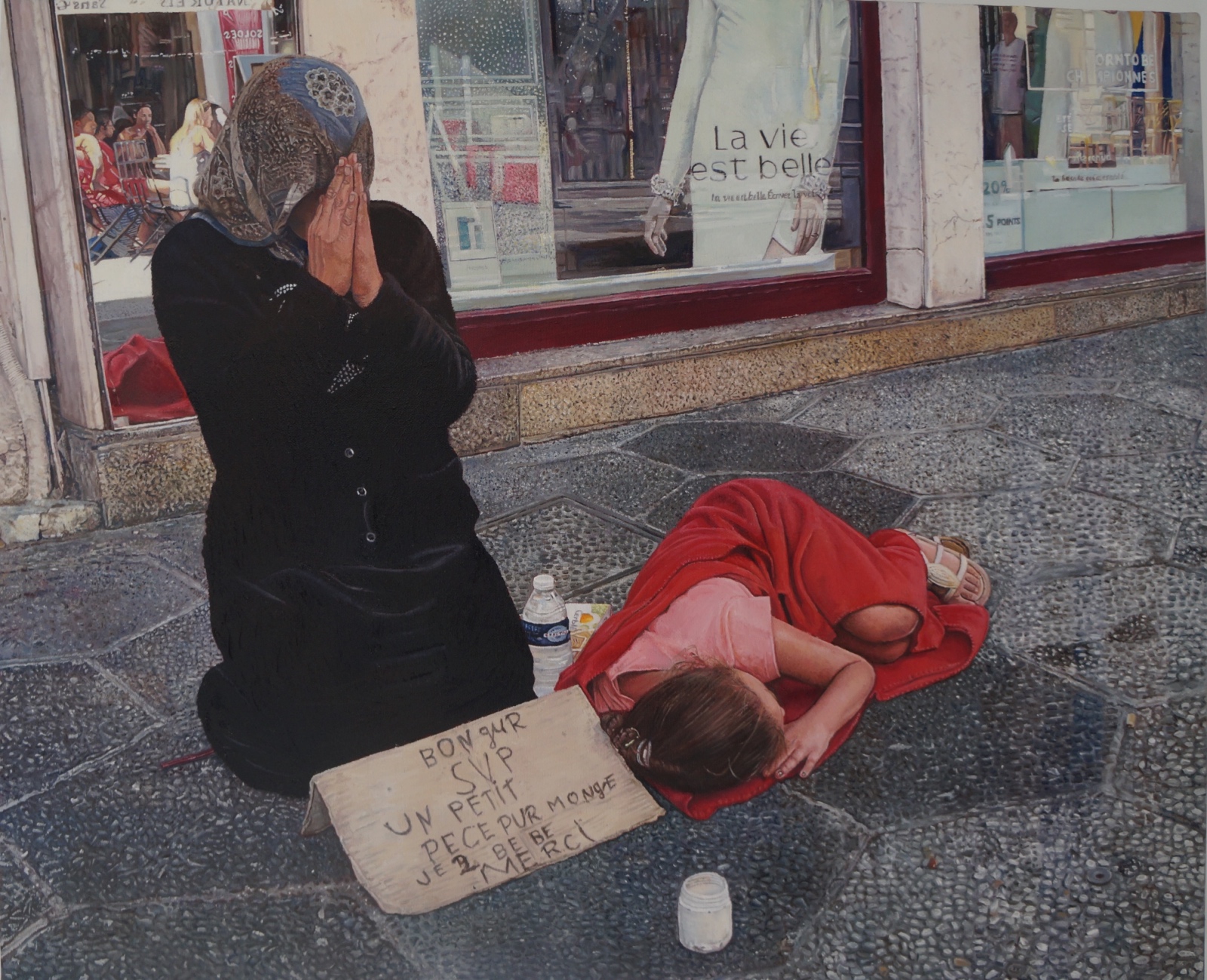
My first memory of a homeless person was a man I saw on a park bench in Southampton, England when I was about six years old. I remember the color — he was surrounded by blankets, carrier bags, so many colors; I remember the face, weather beaten, torn, cracked. But above all I remember the smile, the smile that occurs as soon as eye contact was made. From then on I often sought out the homeless, spoke to them and eventually felt the urge to sketch them.
I saw the homeless as humans in their purest form because materialism and “things” were unimportant. Survival was the closest thought to mind, and this level of stress and anxiety was only forgotten when they were engaged in conversation; when they were told again they were human beings and part of the “club”; when someone was interested in them. I could see this purity and the power of humanity and kindness deep in the eyes of the people I met.
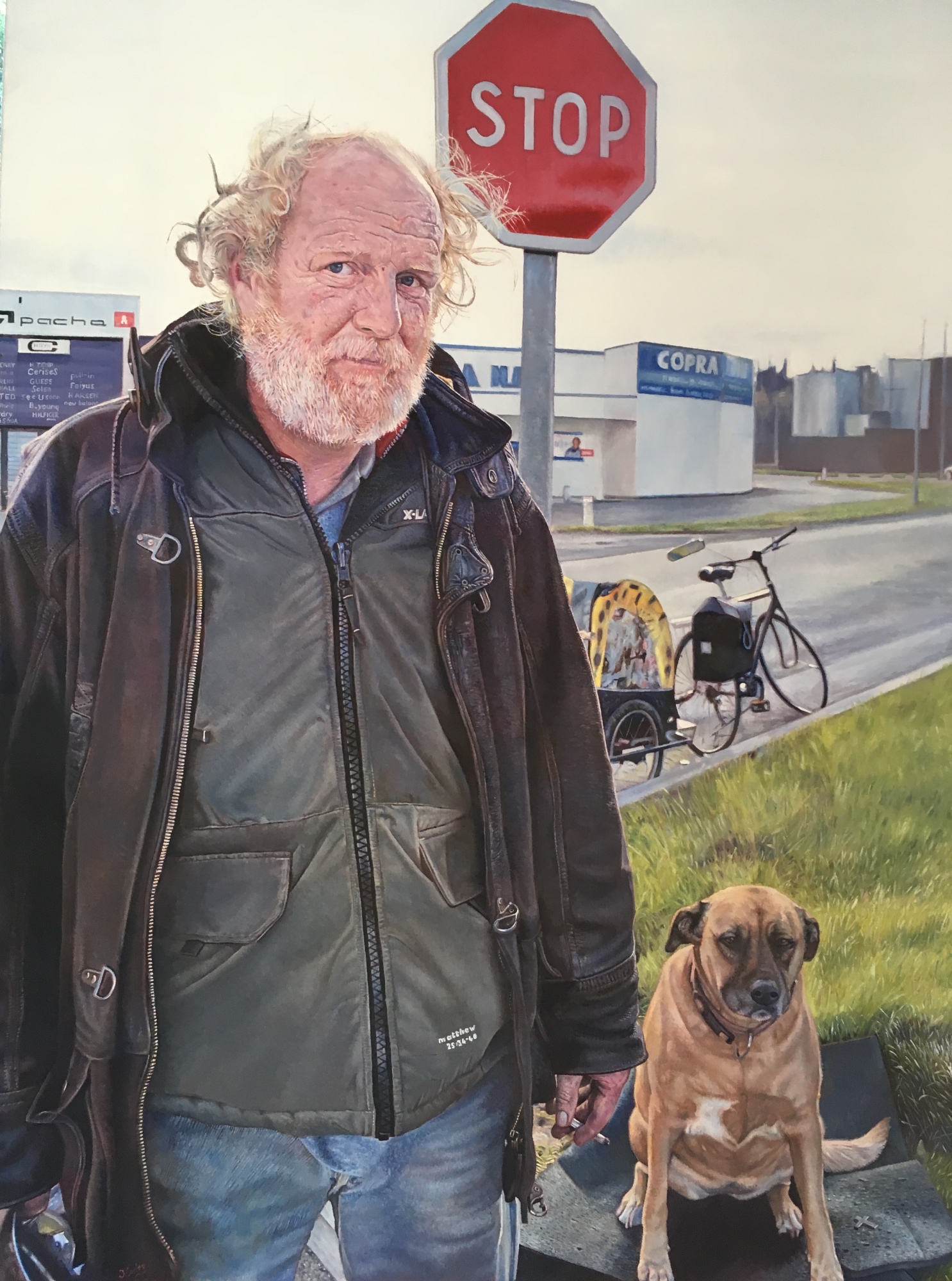
I have subsequently painted homeless people living on the streets of France, England, Spain, Holland, and America. I always try to get to know the subject; I find it far easier to paint a portrait when I know the person, the history of the person and what their intentions are.
I have found that most of the homeless I have met are battling mental illness, which paralyzes them both physically and mentally. And once on this slippery slope and without any support they quickly fall. When I hear people say they have no sympathy for the homeless I feel that it is this lack of humanity, this lack of kindness that has helped to push them on their path to finding home on a cold pavement.
I have had my paintings displayed in galleries in London, Amsterdam, Paris, and Madrid, and I hope this helps to raise awareness of this issue. This is my way that I can help, and I feel honored and privileged that I can help in some way.
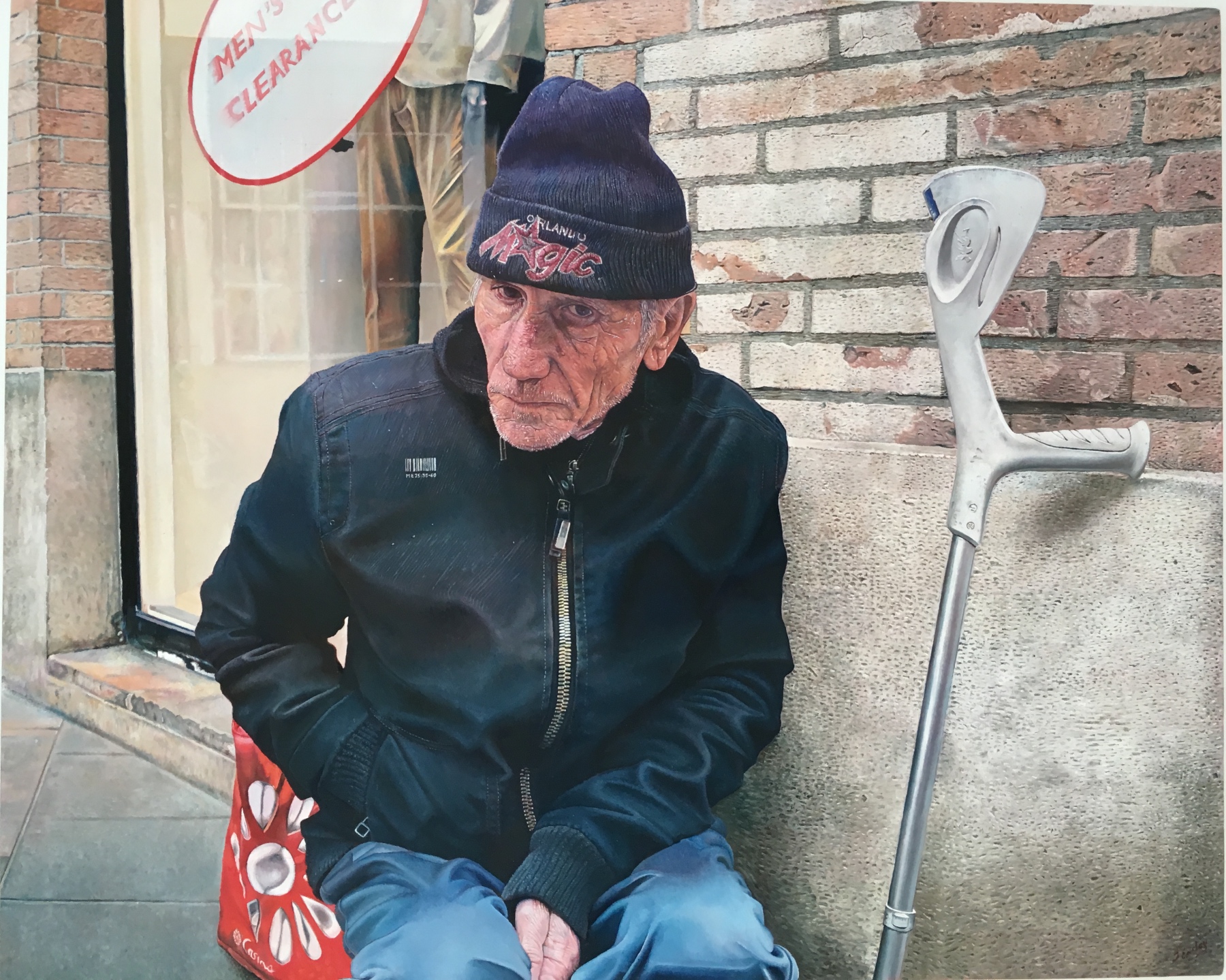
Painting Portraits > Men’s Clearance
The aim of this article is to give you some idea as to why I choose a particular subject, how I ultimately produce the painting and the message I want to get across in my art.
Toulouse is the nearest city to where I live in the south of France, so it is the city that I know, that I am familiar with, and it is a city that has a real homelessness issue. Homelessness in France is a significant social issue, one that is estimated to affect over 140,000 people, including 30,000 children.
I often go to Toulouse to meet the homeless, talk with them, and try to help in some way, whether that is buying someone a coffee or advising them as to what help they may be able to get. I get to see familiar faces, and then after about six months that person disappears and moves on to somewhere else.
This particular day was fairly sunny and there was a warm atmosphere around the main square; there seemed a significant number of young homeless people.
Although they were in a desperate situation, they all wanted to talk and share their story; they all seemed to have some hope for the future no matter how dire their current circumstances were.
I left the main square to walk back to my car. When I walked down a side street, all of a sudden everything changed. Where there was sun, there were clouds; where there was laughter, there was silence; where there were crowds of people, there was just one person, an old homeless man.
My natural instinct was to approach the homeless man and engage in conversation. But as I approached, I noticed there was no movement from the man, no acknowledgement or reaction as I got near him. His eyes did not move, he said nothing to me, even when I asked questions. The sadness hit me like a crashing wave. I had never seen someone so sad. There was no hope in his eyes; he had given up on this world, and his mind was somewhere else, somewhere without all the sadness and pain.
The scenario reminded me of my favorite book, the first book I ever read, Charles Dickens’ “A Christmas Carol.” It reminded me of the step from Christmas Present to Christmas Future. The ghost of Christmas Future always tore at me, and I felt it here. The young homeless people I had just seen clinging to hope, still full of life and laughter; yet turn a corner, and see what the future can hold.
I wanted to show in this picture my views on homelessness. I wanted to add visibility to those who seem invisible. I wanted the message to come over that in the world that we live, where materialism thrives and where people always want more, there are those who are victims of this pursuit of “Want.”
We are all able to help the homeless; it is not an issue that we have no control over. We can buy a coffee, smile, talk, and laugh — all emotions that mean so much more than the small initial amount of joy someone gets from buying something.
“Men’s Clearance” was the slogan I added to the shop window to suggest that this man could be for sale, a reject, a clearance. I added a barcode on the jacket of the subject to tie this idea in. The bag with the broken hearts is something that I developed very slightly in order to make it look like broken hearts rather than petals.
The brick work was really important to me as this gives a harshness, a cold truth to the image. The crutch has an image of an angel with wings on it and I also added under the bar code “Mt 25:35-40.” This is a reference in the Bible (see below) to homelessness. It is not there for a religious message but I think the words are really warming.
“For this, I was an hungered, and ye gave me meat: I was thirsty, and ye gave me drink: I was a stranger, and ye took me in:
Naked, and ye clothed me: I was in prison, and ye came unto me.
Then shall the righteous answer him, saying, Lord, when saw we thee an hungered, and fed thee? or thirsty, and gave thee drink?
When we saw thee a stranger, and took thee in? or naked, and clothed thee?
Or when we saw thee sick, or in prison, and came unto thee?
And the King shall answer and say unto them, Verily I say unto you, Inasmuch as ye have done it unto one of the least of these my brethren, ye have done it unto me.”
~Matthew 25:35-40 (King James Version of the Bible)
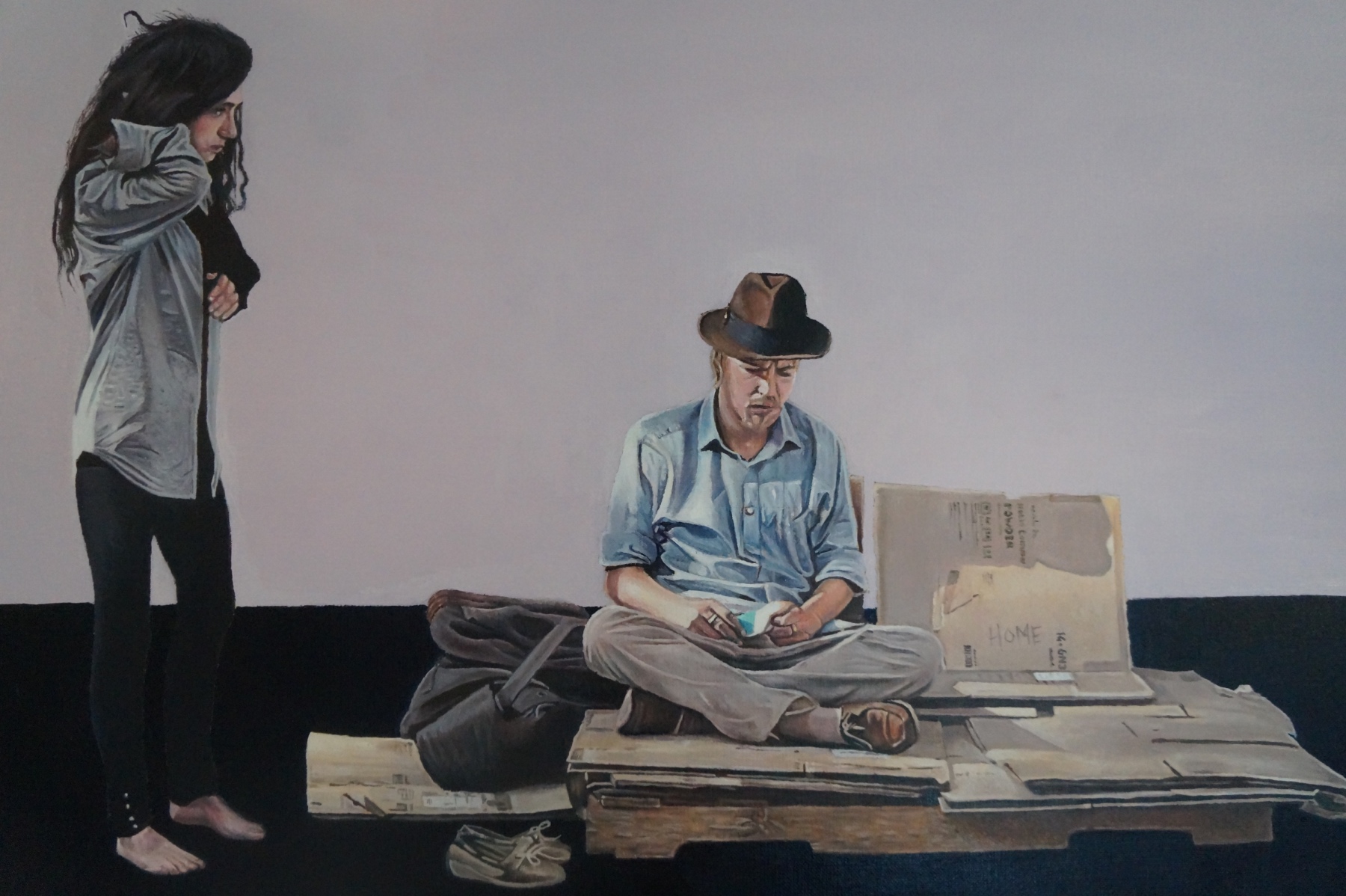
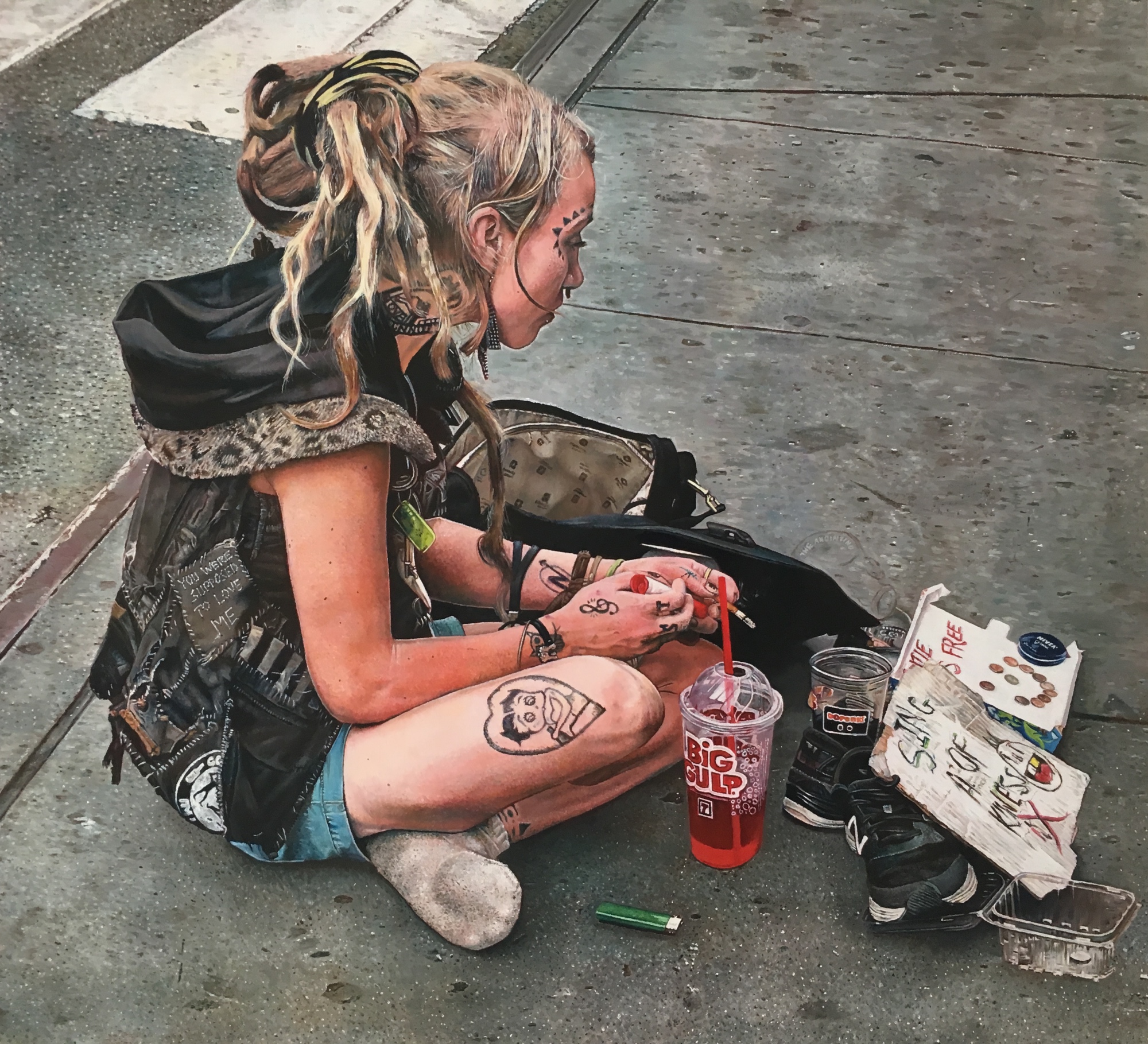
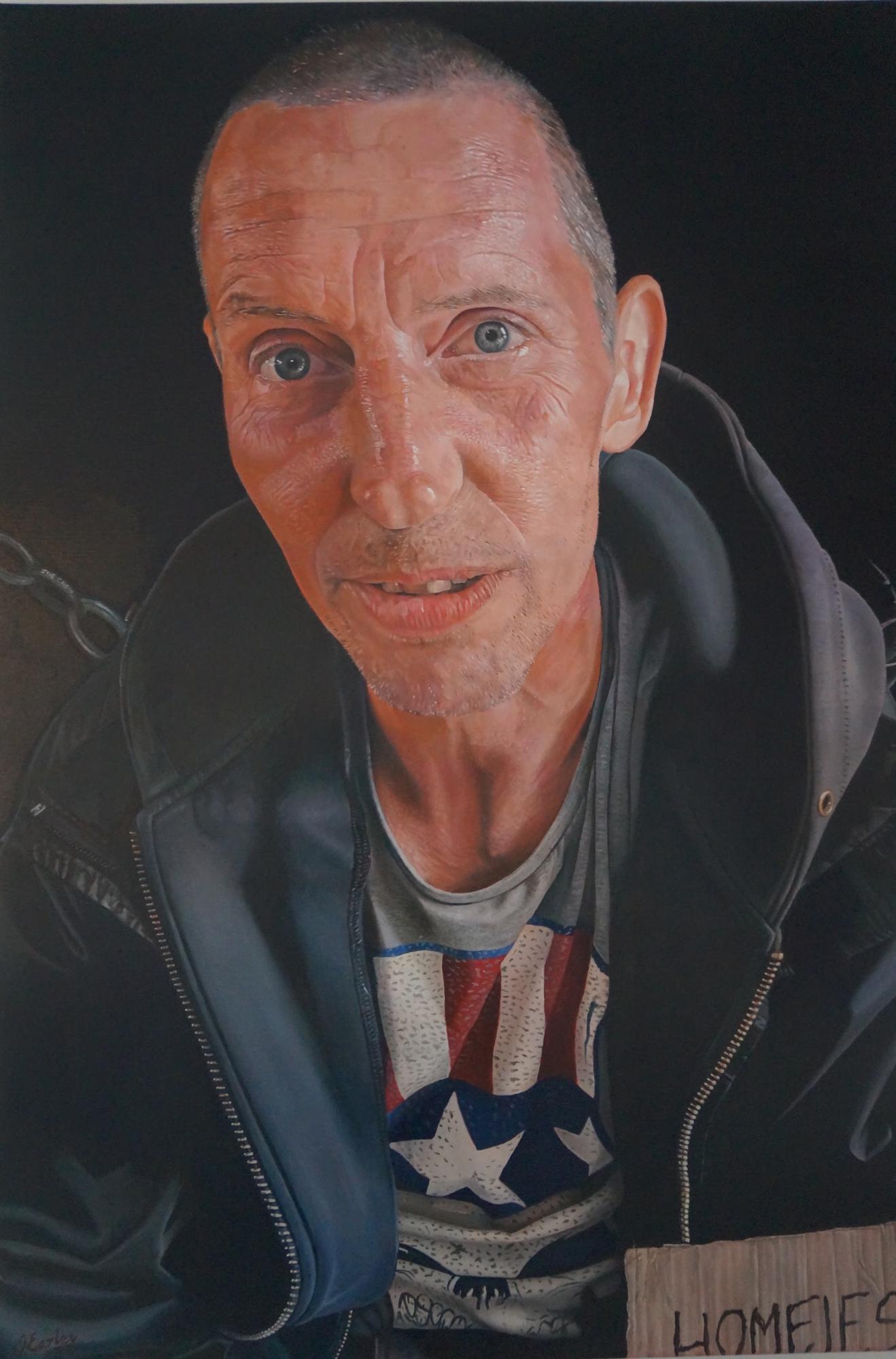
Painting Portraits > Painting Joe Crow: The How and the Why
I met Joe Crow in Winchester, England in 2017 and got to know him. I had met so many homeless people who had had enough, who really wanted to escape this world, yet Joe Crow was different. He had encountered so many problems, so many traumas, yet he kept going, he looked forward and he did not look down. A kind and gentle man full of hope. I really wanted to paint him.
As with all my paintings I primed the canvas with red paint. This allows me to see clearly any parts of the painting that I have not painted as the red shows up clearly. But more importantly I feel it makes the painting glow. It took me about a day to paint the rough image of the face, the aim being to get the proportions and light correct.
Once the rough image is dry, I will then embark on my favorite aspect of any painting — painting the face in detail. This involves many hours and days and many very fine brushes. I use Liquin to help the paint flow.
Once the face is done I can work on the background. I tend to add various objects to the painting to help push the message that I want to promote. I added the cardboard with the words “homeless.” I wanted this to show how the homeless are labelled and viewed as an invisible collective rather than visible individuals.
I added the chains because I felt that the homeless tend to feel chained and locked in to their circumstances. Joe Crow had tried to escape homelessness many times yet his chains stopped him from truly escaping. I added the T-shirt to display the monster of capitalism, where people seem to be putting material possessions before love and kindness of their fellow human beings. I also wanted to change the lighting somewhat to almost divide the face into two: Hope and Fear, the two emotions I felt with Joe. It was an honor for me to paint such a good and inspirational person.
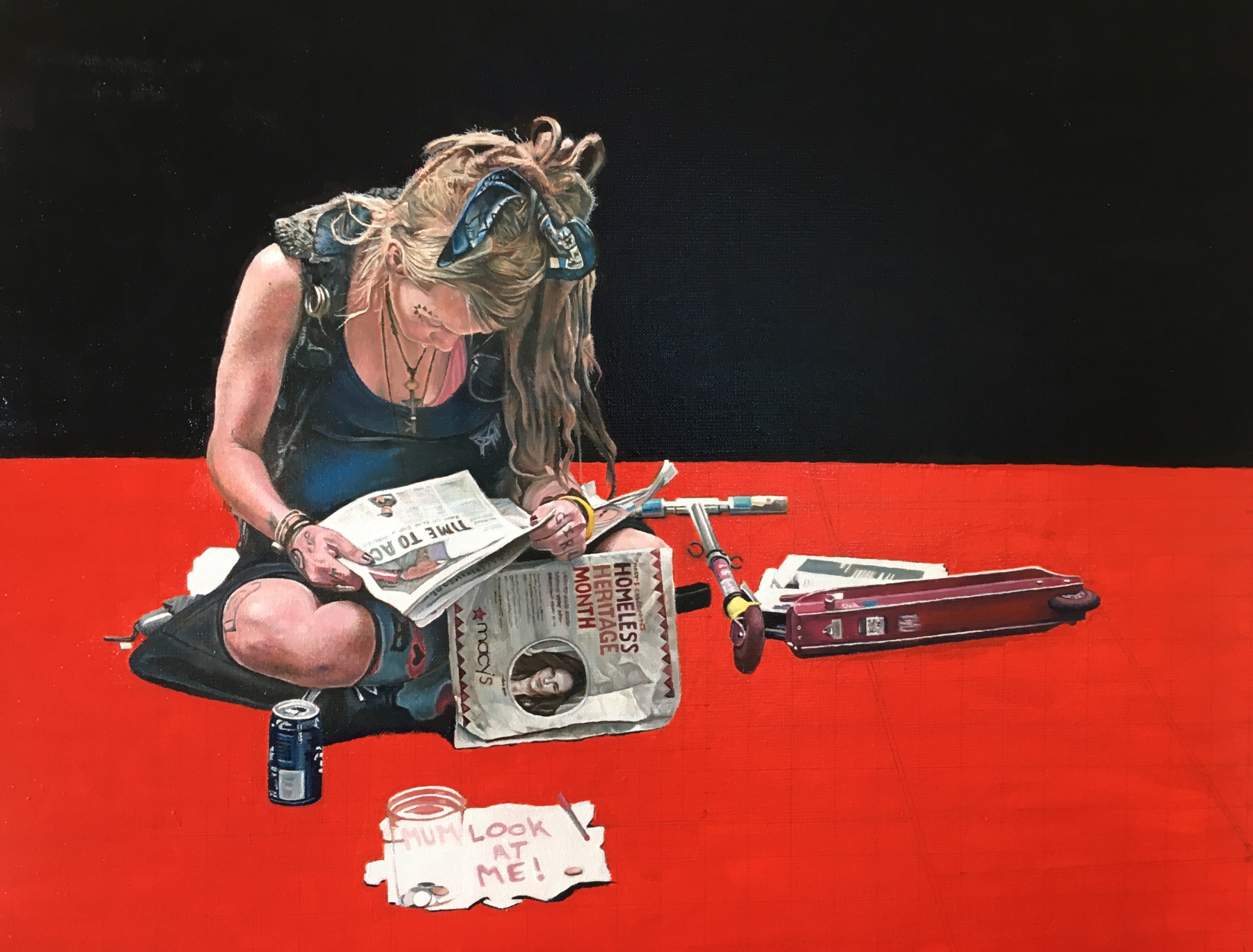
ABOUT THE AUTHOR 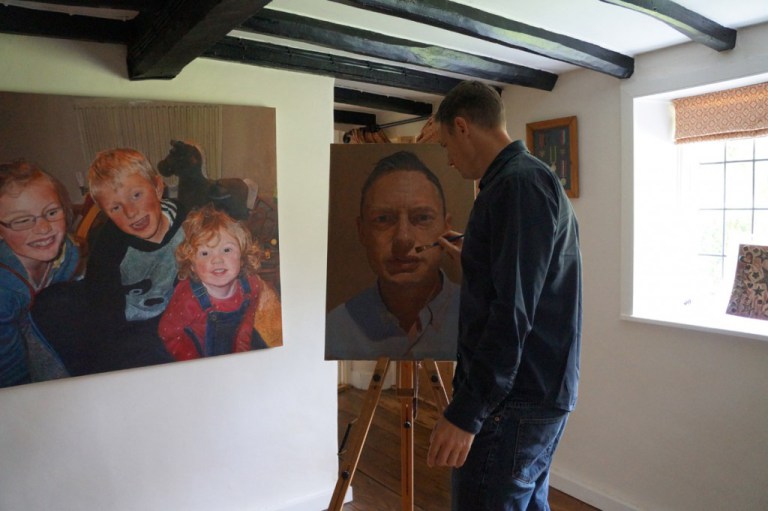
James Earley first came to prominence in 2013 when he was chosen to be a part of The Art Investors acclaimed 2013 “Seven Artists Exhibition,” at London’s Strand Gallery. James’ display of his portrayal of famous musicians was much publicized.
His work took another route in 2015 with his powerful and emotional studies of homeless people, victims of war, and religious martyrs. This work took him to another level in the art world as he was nominated by The BP award, The Royal Institute of Oil Painters and The Royal Institute of Portrait Painters, culminating in his work being displayed at the iconic and famous Mall Gallery in the heart of London.
Connect with James Earley:
Website | Instagram | LinkedIn | Twitter | Facebook
Related Article on Painting Portraits > Painting Portraits in Acrylic: An Unconventional Approach


